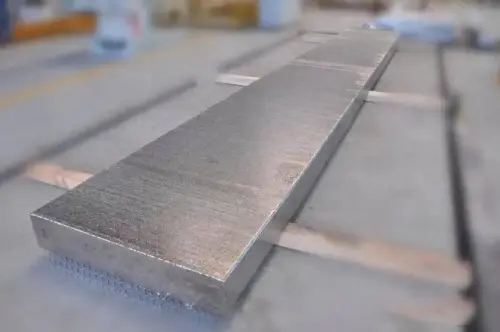As the difficulty of extracting conventional oil and gas resources in China increases, the strategic focus of oil extraction is rapidly shifting to oilfields in special geological environments such as Tarim. These oil wells are generally ultra-deep (often exceeding 4,000 meters), high-temperature, high-pressure, and rich in highly corrosive media such as hydrogen sulfide, posing unprecedented challenges to extraction equipment. As a critical component, the quality, reliability, and lifespan of titanium alloy oil well tubing directly impact the safety and efficiency of the entire extraction operation. According to reports from Titanium Home, accidents caused by issues with oil well tubing have occurred frequently in recent years, further highlighting the urgency of improving the performance of oil well tubing.

In this context, corrosion-resistant titanium alloys, with their outstanding comprehensive performance, have emerged as a promising material to address these challenges:
Excellent corrosion resistance: They exhibit exceptional resistance to corrosive well environments such as hydrogen sulfide, carbon dioxide, and highly mineralized brine, far surpassing conventional steel grades.
Good mechanical properties: They possess sufficient strength and toughness to meet the stringent mechanical performance requirements of deep and ultra-deep wells.
Strong resistance to harsh environments: Maintains stable performance under high-temperature and high-pressure conditions, and exhibits excellent creep resistance and resistance to stress corrosion cracking.
Among these, the UNS R55400 (Ti-3Al-2.5V-0.05Pd) alloy, specifically developed by the United States for high-temperature and high-pressure oil and gas wells, represents the next generation of corrosion-resistant titanium alloys. As an α+β type alloy, it inherits the inherent advantages of titanium alloys while significantly enhancing performance under extreme well conditions through optimized composition design, particularly in terms of high-temperature strength, creep resistance, localized corrosion resistance (such as pitting corrosion and crevice corrosion), and resistance to sulfide stress corrosion cracking (SSCC).
However, the large-scale application of titanium alloy oil well tubing still faces practical challenges:
High applicability threshold: Most existing commercial titanium alloys were not designed for such complex and demanding petroleum extraction environments, and their performance may not fully meet the requirements.
Cost bottleneck: High-performance corrosion-resistant titanium alloys like UNS R55400 rely on the addition of expensive rare metals like palladium (Pd) for their superior performance, resulting in material costs significantly higher than traditional steel pipes. This makes economic viability a major obstacle in the titanium alloy oil well tubing industry, where large-scale use of tubing is required.
Therefore, despite the significant potential of corrosion-resistant titanium alloys to address corrosion and strength issues in deep wells, ultra-deep wells, and high-sulfur wells demonstrated in laboratories and specific high-end applications, the research, development, and application of titanium alloy oil well tubing in China currently remain primarily in the development and experimental verification stages, with no large-scale production or widespread practical engineering applications yet achieved.
In the future, whether titanium alloys can truly “make a significant impact” in the oil and gas extraction field will depend on whether they can effectively reduce overall costs through component optimization, process innovation, and large-scale production while ensuring the performance required for extreme environments, thereby breaking through the economic barrier and becoming a reliable tool for ensuring national energy security and advancing into deeper and more complex oil and gas resources. The path to practical application for this “corrosion-resistant vanguard” still requires ongoing exploration and breakthroughs by materials scientists and engineers.











